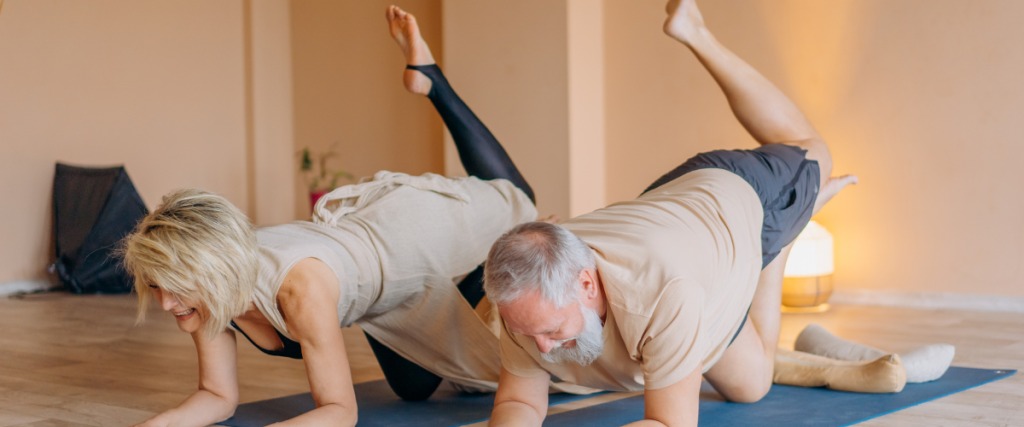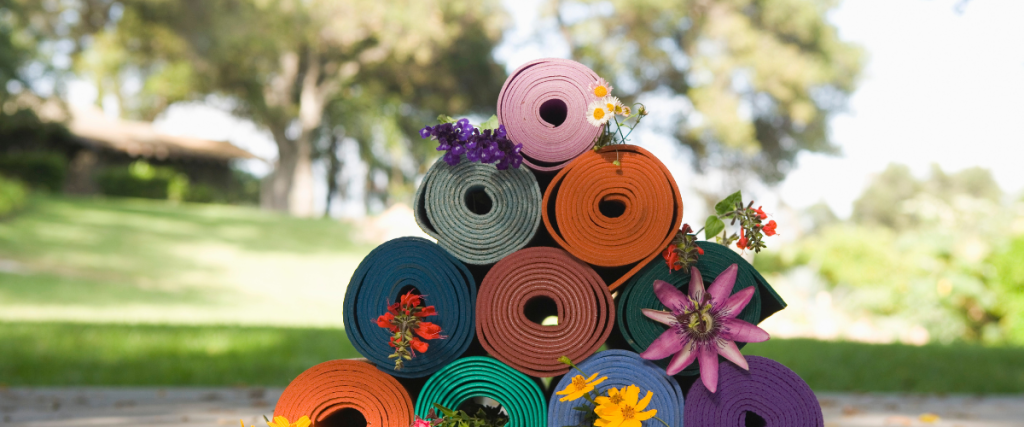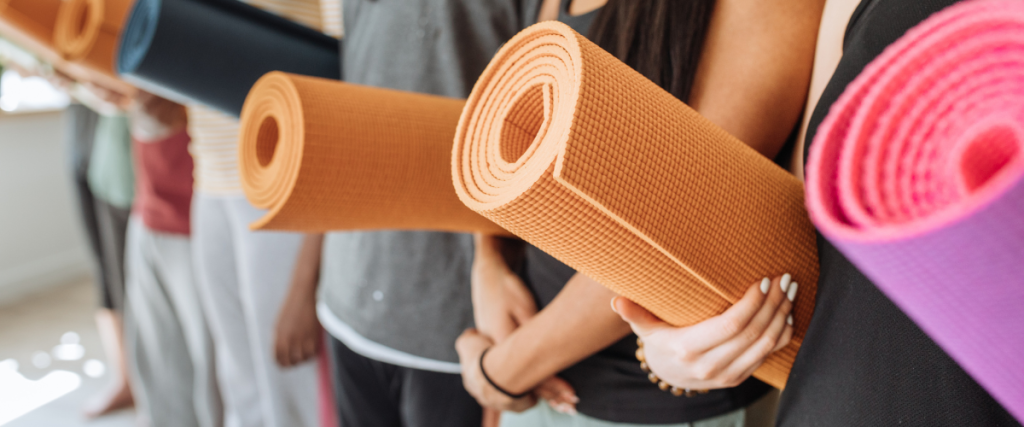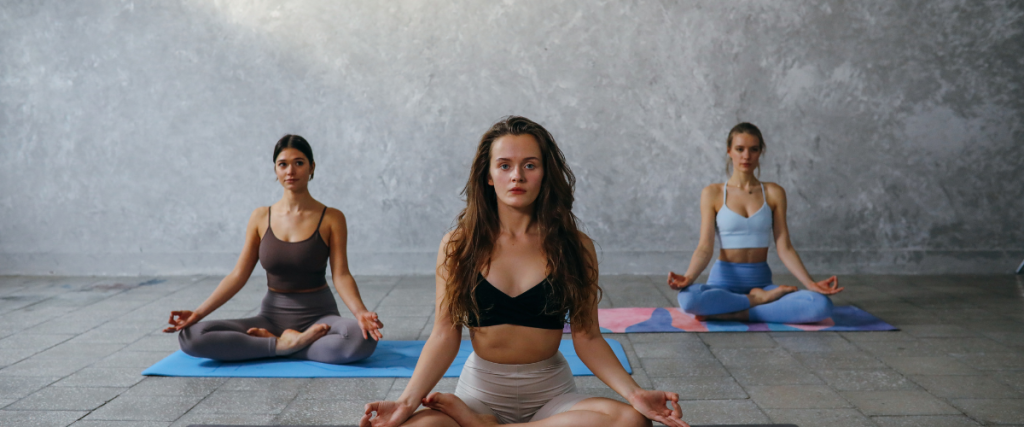
Choosing which yoga mat to use can be tricky with all the available options in the market. You will need to consider many factors in looking for the yoga mat that best matches your preference. Consider these important aspects as you choose the perfect yoga mat for you!
Thickness
A mat’s thickness or padding is one of the most crucial details you’ll need to consider. Using something too thin is not recommended for people with sensitive joints or injuries in the back or knees as it will not provide enough cushion. Meanwhile, too thick of a mat might make it too heavy and bulky and can compromise your balance during standing poses. The standard thickness for a yoga mat is about ⅛ inch, while thicker ones run up to ¼ inch or more. If you need something more portable and travel-friendly, 1/16-inch thin mats are recommended.

Length and Breadth
There is no standard measurement for a yoga mat’s length and width. It can go different for any manufacturer. The average mat runs up to 68 inches long and 24 inches wide. But you can find extra long mats at 84 inches and extra wide ones at up to 32 inches.
The main principle is you have enough wiggle room to move and stretch within the mat, or your hands, feet, head and body are not hanging out while lying down. Always remember that your safety and comfort should always come first!
Traction and Texture
Can you imagine the risks of slipping and falling down while doing handstands or while in the downward dog pose? Slipping is a big NO NO in yoga. This is why checking a mat’s ‘stickiness’ and texture are essential. It is extremely important when you go through intense sessions or hot yoga workouts, which will make you really sweaty. And having sweaty limbs on mats that don’t have much grip is an accident waiting to happen.

Stickiness relates to your grip on the mat and how much it keeps you in place and prevents slipping. Texture pertains to how the mat feels. It can be the organic roughness of the material or the manufactured bumps or lines. These lines are not only beneficial for grasp and balance, but it also helps in keeping with the alignment during the workout as well.
You may go for a mat that has a tactile pattern or something smooth and sticky if you are not comfortable having your hands on something bumpy or rough.
Price and Budget
One might get too excited and splurge while shopping for yoga essentials, which is why you need to set a budget, even for your yoga mat. PVC mats are commonly the cheapest option in the market, while the more natural and eco-friendly choices are more expensive.

Features like extra length or width, thicker padding, additional texture and patterns, and design, as well as the brand name, can tack an additional premium to the price.
However, take note that expensive mats don’t necessarily mean the best quality nor is it the best mat for you. If you are just starting out to practise yoga, it might be better to get a standard mat first and then upgrade once you’ve committed to the lifestyle.
Eco-Friendly
One of the most important guidelines in yoga is ahimsa or the principle of non-violence. It means rejecting anything that causes harm to any living being. To fully imbibe that, you’ll also need to be more aware of how you impact the earth.
With that, yoga mats from natural and organic materials are best recommended compared to synthetic plastics. These do not contain toxic materials, which can leach off into the air, soil or water, and scarily enough, even while you are using the mat. They will also not clog our landfills years or decades down the line as they are biodegradable or recyclable.
Material
All these factors on this list actually depend on this component: the material the yoga mat is made of. The most accessible yoga mats are usually made from PVC or synthetic plastic. While these are durable and pliable, PVC mats are considered health and environmental risks with its toxic and non-biodegradable components.
Yoga mats can also be sourced from sustainable materials like natural and recycled rubber (there are synthetic rubber mats as well, so be cautious!), cotton, jute, organic cotton and more. More eco-friendly options of PVC have been used but it is still not fully organic nor completely earth-friendly. Know more about what makes up a yoga mat as we explain popular yoga mat materials.

Final Thoughts
Organising your preferences based on these aspects can help you trim down your options and finally make the choice. While there is the probability that you will not get all of your must-haves in one yoga mat, make sure that you get the one that fulfils the majority of your considerations. It should be the mat you will be most comfortable with, letting you focus on your meditation and poses. Start your search for the perfect mat for you with the different yoga mats available in our store.
